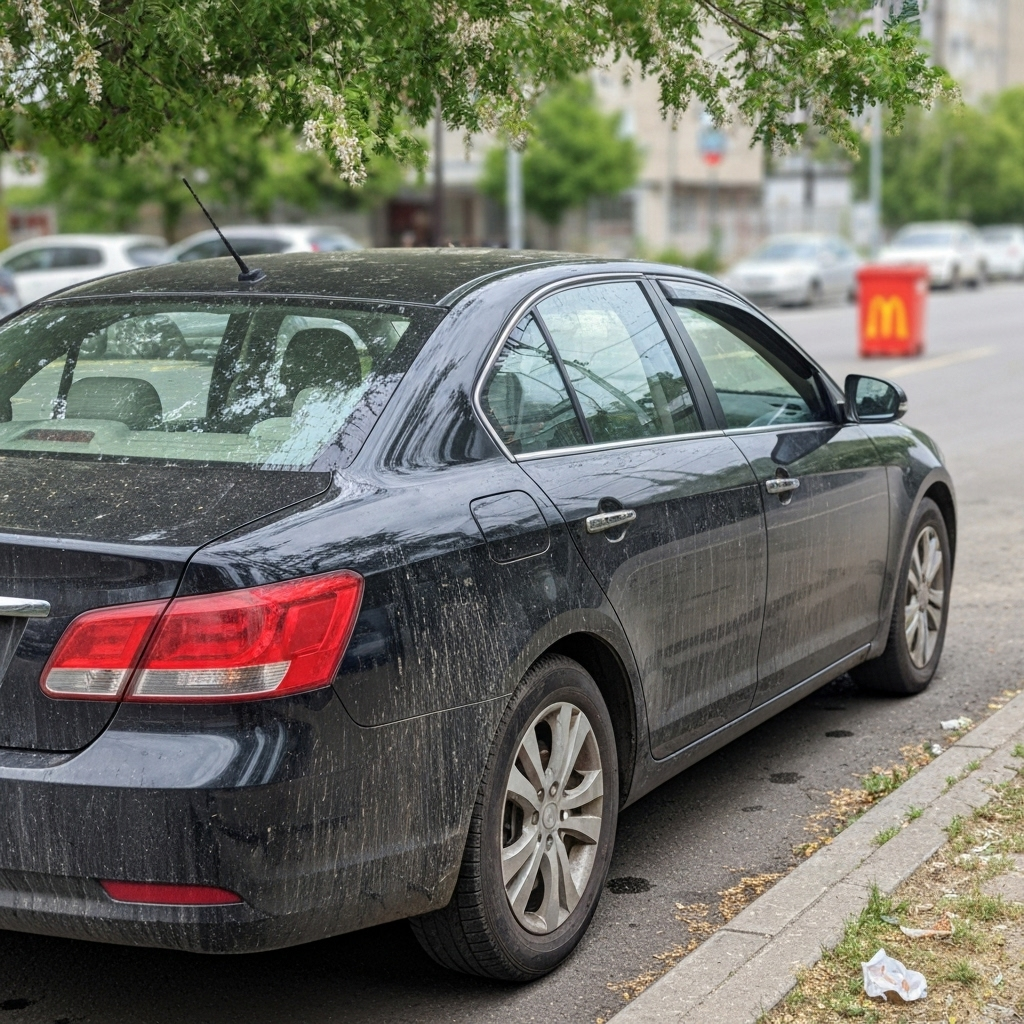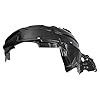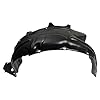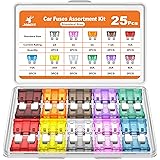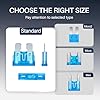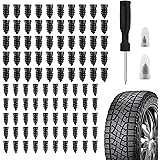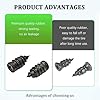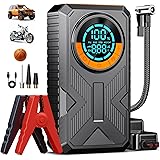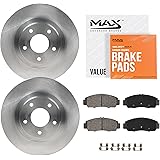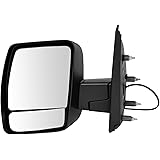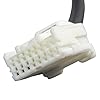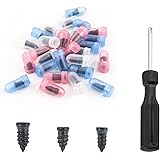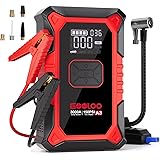Table of Contents
If you’ve ever stood in a parking lot admiring a black car with a mirror-like shine, you’ve likely also asked yourself, are black cars harder to keep clean? The short and unequivocal answer is yes. Black cars are notoriously high-maintenance, not because they attract more dirt, but because their dark, non-reflective surface acts as a perfect canvas to highlight every single flaw. From dust and water spots to the most dreaded enemy of all—swirl marks—every imperfection stands in stark contrast to the deep black paint. However, this shouldn’t necessarily deter you.
The unparalleled elegance and sophistication of a perfectly maintained black car are what make the extra effort so rewarding. This definitive guide will not only explain the science behind why black paint is so demanding but will also provide you with a comprehensive, step-by-step blueprint to achieve and maintain that head-turning, showroom-quality finish with less frustration.
The Science of Swirls: Why Black Cars Show Every Imperfection
To understand the challenge, you must first understand what you’re working with. The issue isn’t the black pigment itself; it’s how our eyes perceive light and contrast on a dark surface.
It’s All About the Clear Coat and Contrast
Modern vehicles are coated with a layer of clear coat over the colored base paint. This clear coat is what you are actually touching, washing, and polishing. When you wash your car, you’re washing this top layer of protective clear coating . Scratches, even microscopic ones, inevitably occur in this clear coat. These scratches appear white because of the way light scatters within them .
On a white or silver car, these white scratches blend in and are virtually invisible to the naked eye. On a black car, the stark contrast between the deep, dark paint and the light-colored scratches makes every single one highly visible . Under direct sunlight or bright showroom lights, a poorly maintained black car can look like a “disco ball” of swirl marks, a phenomenon known as swirl fatigue .
The Unforgiving Nature of a Dark Canvas
Beyond scratches, black paint creates a high-contrast background for nearly every contaminant .
- Dust and Pollen: Light-colored dust that might be invisible on a silver car is instantly apparent on black .
- Water Spots: Minerals in hard water leave behind white, chalky spots when the water evaporates. These spots stand out dramatically on black paint and can even etch into the clear coat if not removed promptly .
- Road Grime and Splatter: Light mud, bug splatter, and bird droppings all create a visual pop against the dark background, making the car look dirty much sooner after a wash .
This is why a black car can look dirty just hours after a meticulous wash, creating the perception that it “attracts” dirt, when in reality, it just reveals what other colors are able to hide .
How Black Cars Compare to Other Colors
To truly appreciate the challenge of black, it’s helpful to see how it stacks up against other popular car colors. The ease of keeping a car clean is directly related to how well its color camouflages dirt and imperfections.
Table: Car Color Cleanliness Ranking
As the table illustrates, light, neutral, and highly reflective colors are the winners for low-maintenance cleanliness. Black, along with other dark and saturated colors, sits at the opposite end of the spectrum, demanding the most attention and care.
The Ultimate Guide to Washing a Black Car Without Creating Swirls
The single most important skill for a black car owner to master is the proper washing technique. This is where the vast majority of swirl marks are introduced. The goal is to minimize friction and prevent any contaminants from being dragged across the clear coat.
Essential Tools for a Scratch-Free Wash
Using the right tools is not a suggestion; it’s a requirement for keeping your black car swirl-free.
- The Two-Bucket Method: This is non-negotiable. Use one bucket for your clean soapy water and a second bucket filled with clean rinse water. Equip both buckets with Grit Guard inserts, which are grates that sit at the bottom to trap dirt and prevent it from being redeposited onto your wash mitt .
- High-Quality Microfiber Wash Mitts: Ditch the sponges and old T-shirts. A plush, clean microfiber wash mitt or a Chenille Microfiber Wash Mitt is ideal. These have long fibers that trap dirt away from the paint surface and provide generous lubrication . Some experts recommend the “multiple mitt method”—using several clean mitts during a single wash and dedicating one to the heavily soiled lower panels to prevent cross-contamination .
- pH-Balanced Car Wash Soap: Never use dish soap or harsh household cleaners. They strip away protective waxes and sealants. A dedicated, pH-balanced car wash soap is designed to clean effectively while providing lubricity to help the mitt glide over the surface without scratching .
- Premium Drying Towels: Use a dedicated, high-gsm (grams per square meter) plush microfiber drying towel like “The Gauntlet” or “Dry Me Crazy.” These towels are incredibly absorbent and soft, allowing you to dry the car by blotting and gently dragging instead of rubbing .
The Step-by-Step Washing Protocol
- Wash in the Shade: Never wash your black car in direct sunlight or on a hot surface. The sun will cause soap and water to dry too quickly, leading to water spots and hazing, which can force you to rub harder and create scratches .
- Pre-Rinse and Pre-Foam: Before touching the car, use a pressure washer or hose with a foam cannon to thoroughly rinse and then coat the entire vehicle in a layer of thick foam. This step helps to loosen and encapsulate surface dirt, allowing much of it to be rinsed away without physical contact . The process should be rinse → foam → rinse again → then begin contact washing .
- The Contact Wash (Top-Down): Dunk your clean wash mitt into the soap bucket and begin washing the car panel by panel, starting at the roof and working your way down to the lower panels, which are typically the dirtiest. Use long, light, overlapping strokes. After washing a single panel, rinse the mitt thoroughly in the rinse bucket (scrubbing it against the Grit Guard) before reloading it with fresh soap from the soap bucket . This two-bucket method is your best defense against swirls.
- Thorough Rinsing: Once the entire car has been washed, perform a comprehensive rinse. To minimize water spotting, use a “sheeting” method by removing the nozzle from your hose and letting a gentle flow of water slide over the panels, pulling water off the surface .
- The Critical Drying Stage: This is where many water spots and fine scratches are introduced. Have your premium drying towel and a dedicated leaf blower ready.
- First, use the leaf blower to blow water out of crevices, emblems, and body seams.
- Then, use the blower to push the bulk of the standing water off the horizontal panels.
- Finally, use your plush drying towel to gently blot and glide over the remaining moisture. Avoid rubbing or applying excessive pressure . For the absolute best, spot-free results, consider a final rinse with deionized water, which contains no minerals and will not spot, allowing you to air-dry or blow-dry without worry .
The Great Debate: Automatic Car Washes and Black Cars
The question of whether to use an automatic car wash for a black car has a clear answer from detailing professionals: avoid them at all costs .
- Touchless Car Washes: These are the “lesser of two evils” as they use high-pressure water and harsh chemicals instead of physical contact. While they avoid brushes, the chemicals can be damaging to your paint’s protective layers over time .
- Friction / Brush Car Washes: These are the absolute worst enemy of black paint. The spinning brushes act like sandpaper, trapping dirt from hundreds of previous vehicles and grinding it into your clear coat, instilling deep swirls and scratches that are difficult and expensive to remove .
Your safest and most effective option is always a proper hand wash using the techniques outlined above.
Beyond Washing: Advanced Protection and Maintenance

Washing correctly is the foundation, but to truly make maintenance easier, you need to invest in high-grade protection for your paint.
The Game-Changer: Ceramic Coatings
While traditional waxes provide a short-lived layer of protection (a few weeks to a few months), ceramic coatings represent a revolutionary advancement for black car owners .
A ceramic coating is a liquid polymer that, when applied to your paint, chemically bonds with the factory clear coat. It creates an incredibly hard, durable, and slick layer of protection that can last for years, not months . The benefits for a black car are transformative:
- Unmatched Scratch Resistance: The hardened layer provides superior resistance to wash-induced swirls and light scratches .
- Easier Cleaning: The ultra-slick surface prevents contaminants from bonding strongly to the paint. Dirt, grime, and even brake dust release much more easily, making your routine washes faster and safer .
- Elimination of Water Spots: Ceramic coatings create an extremely hydrophobic surface, meaning water beads up and rolls off instantly, taking dirt with it. This dramatically reduces the chance of water spots forming .
- Enhanced Gloss and Depth: A ceramic coating does not fill defects like some “black-specific” products with dyes; it enhances the actual clarity and depth of your black paint, delivering a wet, liquid look that is far superior to any wax .
Applying a ceramic coating does require proper paint preparation (a thorough wash and decontamination, often followed by paint correction), but it is the single best investment you can make to preserve the beauty of your black car and reduce your long-term maintenance workload .
Dealing with Inevitable Swirls and Scratches
Even with the most careful maintenance, some swirls may appear over time. For light scratches and swirls, a good hand-applied polish can often rectify the issue. For anything more serious, paint correction using a dual-action polisher is required .
This process involves using a machine polisher with a series of abrasive compounds and pads to methodically level the clear coat, removing a microscopic layer to eliminate the scratches and restore a flawless finish . It is a skilled and time-consuming process, but it is the only way to truly “reset” your paint to a perfect state before applying a protective coating like a ceramic sealant . If you are not comfortable doing this yourself, seeking a professional detailer is a worthwhile investment.
Creating a Sustainable Maintenance Routine for Your Black Car
Consistency is more effective than intensity when it comes to maintaining a black car. Here is a practical routine to follow:
- Weekly/Bi-Weekly: Perform a maintenance wash using the two-bucket method. This prevents the buildup of stubborn grime that requires aggressive cleaning later.
- Immediate Attention: Keep a quick detailer spray and a clean microfiber towel in your garage or trunk. Use it to immediately spot-clean bird droppings, bug splatter, or tree sap before they have a chance to etch into the clear coat .
- Every 3-6 Months: If you are not using a ceramic coating, apply a high-quality synthetic sealant or wax to maintain protection.
- Annually or as Needed: Inspect the paint for swirls and consider a polish or paint correction to address any defects that have accumulated. For a ceramic-coated car, use a dedicated coating maintenance spray every few washes to rejuvenate the hydrophobic properties.
Conclusion: Embracing the Challenge
So, are black cars harder to keep clean? The evidence is overwhelming: yes, they are. Their unforgiving nature highlights every speck of dust, every water droplet, and every micro-scratch, demanding a level of care and attention that lighter-colored cars simply do not. However, this should not be seen as a deterrent, but rather as a call to a higher standard of automotive care. The reward for this diligence is an unmatched aesthetic payoff. There is no sight in the automotive world quite as stunning as a perfectly maintained black car, with its deep, reflective, liquid-like finish that turns heads and radiates sophistication. By embracing the proper techniques—meticulous washing, advanced protection like ceramic coatings, and a consistent maintenance routine—you can transform the high-maintenance reputation of a black car into a deeply satisfying ownership experience. The journey to perfection is demanding, but the destination is undoubtedly worth it.

